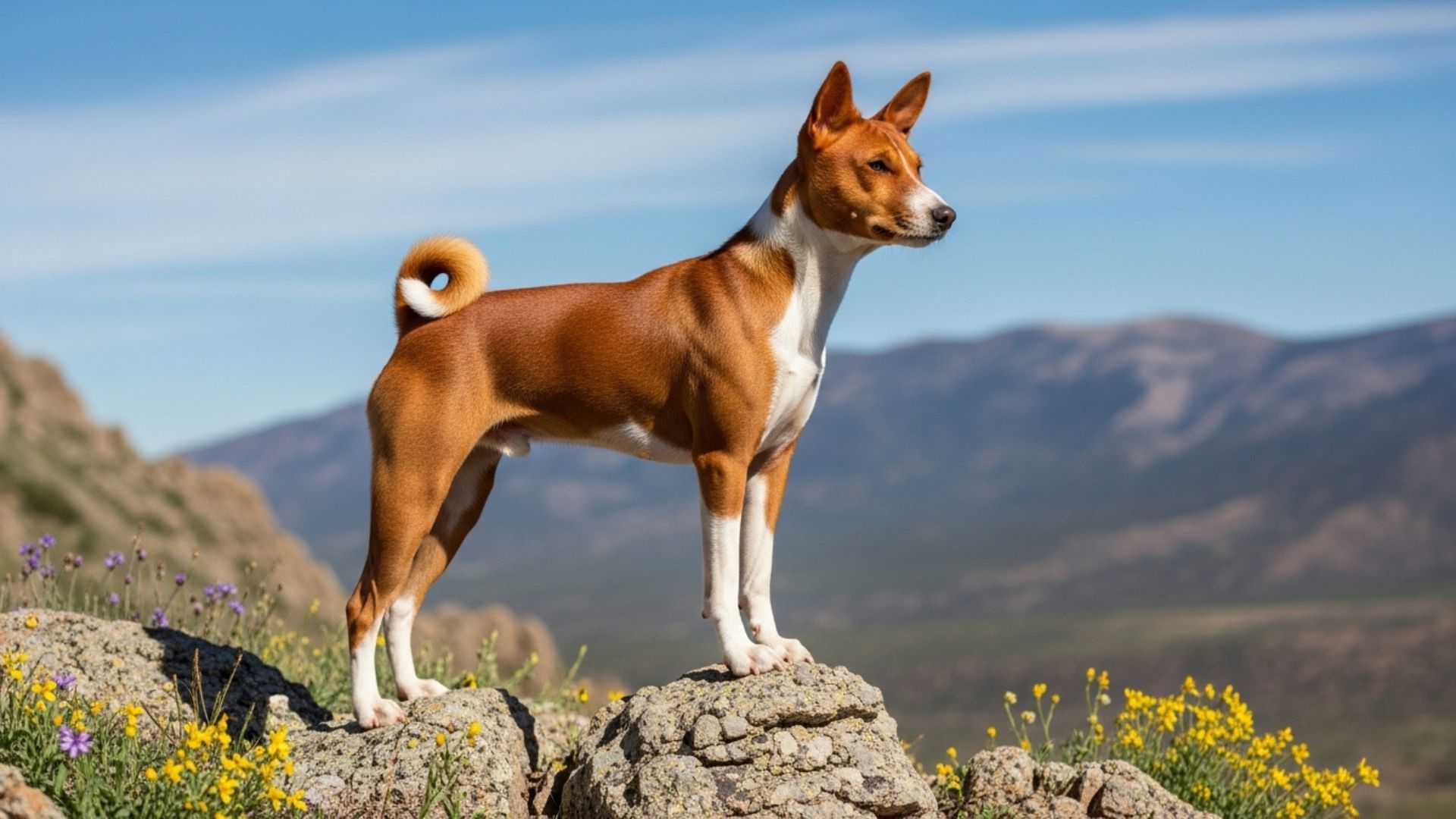Not every dog wants constant cuddles or endless direction; some prefer to think for themselves. These are the independent dog breeds, known for their sharp minds, strong instincts, and unwavering sense of purpose.
Bred to work alone, whether guarding livestock, tracking game, or patrolling territory, these dogs developed confidence and problem-solving skills that make them stand out from the pack.
If you appreciate a pet with personality, one that isn’t afraid to take the lead or entertain itself, these breeds are perfect examples of a self-reliant spirit.
They form deep bonds with their families but don’t depend on constant attention to thrive. Instead, they value mutual respect, clear boundaries, and freedom to explore.
In this guide, we’ll meet dog breeds that balance loyalty with autonomy, canine companions who walk beside you by choice, not command. They’re proof that independence and affection can coexist beautifully.
Independent Dog Breeds Famous for Their Unwavering Independence
1. Greyhound
The Greyhound is a graceful, athletic breed celebrated for its speed and sleek build. Originally bred for hunting and racing, it’s an independent thinker that makes its own decisions in the field. This self-assured nature translates to a calm, confident companion at home.
While affectionate with family, Greyhounds value their personal space and quiet time. They form close bonds but rarely demand constant attention, preferring a peaceful environment. Their independence makes them ideal for owners who appreciate a dog that enjoys both company and solitude.
According to the American Kennel Club, despite their athletic background, they are surprisingly low-energy indoors. A few brisk walks or short sprints satisfy their exercise needs, leaving plenty of time for lounging. This balanced temperament makes them easy to live with in various settings.
Their short, smooth coat requires minimal grooming, helping maintain a clean look with little effort. Combined with their overall robust health, they’re considered low-maintenance pets.
As one of the oldest known breeds, the Greyhound’s independent spirit is part of its heritage. They thrive with respectful training, gentle guidance, and freedom to stretch their legs.
Quick Tips
Provide daily exercise with short runs or walks
Use soft bedding; they love comfortable resting spots
Offer calm, positive training sessions for the best results
2. Basenji
The Basenji is often called the “barkless dog” thanks to its unique vocalizations and quiet demeanor. Originating from Central Africa, it was bred for hunting, developing keen intelligence and strong self-reliance. This breed prefers to analyze situations before acting, proof of its confident independence.
Known for its cat-like grooming habits, the Basenji keeps itself exceptionally clean. Its short coat and minimal shedding make it one of the easiest dogs to maintain, requiring very little grooming. This natural neatness adds to its charm as a tidy, self-sufficient companion.
Basenjis form strong attachments to their families but appreciate autonomy. They enjoy affection on their terms and often entertain themselves when owners are busy. Their curious minds and active nature make them both playful and proud.
Training a Basenji takes patience and creativity, as they prefer understanding why before obeying. Positive reinforcement and varied sessions keep them engaged and responsive.
This clever, spirited breed is perfect for experienced dog owners who value a partner that’s as bold as it is independent. They bring both intelligence and individuality to the home.
Quick Tips
Use variety and reward-based methods during training
Offer puzzle toys to engage their problem-solving instincts
Brush weekly to maintain their sleek coat
🎧 Dogcast
Episode 10 — Halloween Special
If you don’t hear sound, tap the button above to enable audio.
3. Basset Hound
The Basset Hound is famous for its long ears, soulful eyes, and strong sense of smell. Bred for tracking game, it follows scent trails with determination, often ignoring distractions or commands until its mission is complete. This focused behavior is a classic mark of independence.
Despite their stubborn streak, Basset Hounds are affectionate and loyal. They enjoy family life but prefer to make decisions at their own pace. Owners quickly learn that gentle consistency works better than force with this thoughtful breed.
Their short coat and low grooming requirements make them easy to maintain. Regular ear cleaning and brushing help prevent dirt buildup, especially during outdoor adventures. These small routines keep them healthy without demanding intensive care.
Daily walks and moderate activity suit their build, as they’re not naturally high-energy. Letting them explore at their own speed satisfies their curious nature.
Independent yet loving, the Basset Hound thrives with positive guidance and patience. They’re steady companions who reward understanding owners with loyalty and charm.
Quick Tips
Encourage exercise through scent-tracking games
Use patience and positive reinforcement in training
Keep ears clean to prevent infections
4. Chinese Shar Pei
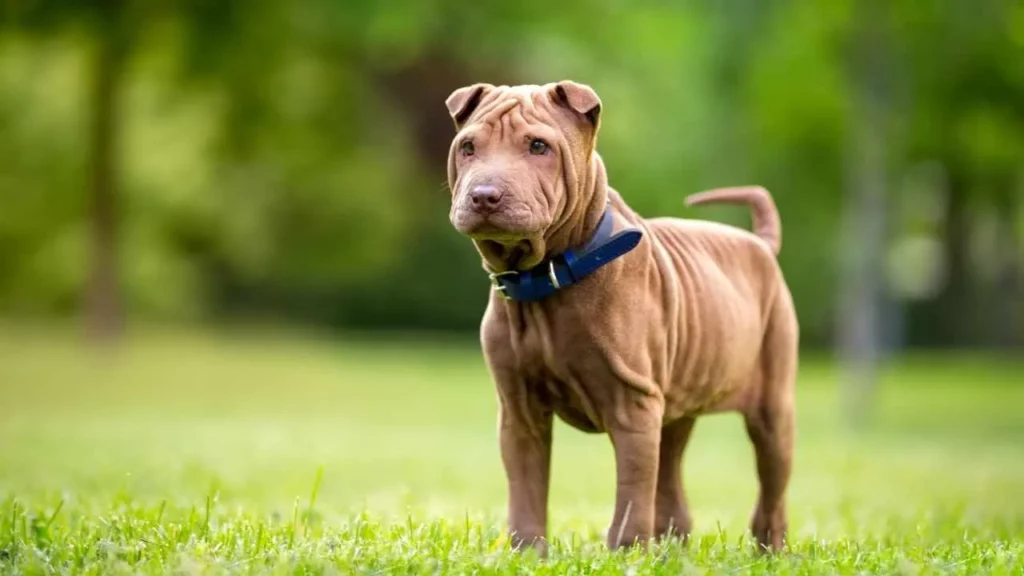
The Chinese Shar Pei is a distinctive breed recognized by its wrinkled skin, blue-black tongue, and calm, watchful demeanor. Originally bred as a farm guardian, it developed keen instincts and a self-reliant temperament. This independence remains one of its defining traits today.
Shar Peis form strong bonds with their families but prefer to think before they act. They’re naturally wary of strangers, yet deeply loyal to those they trust. Their confident nature and quiet alertness make them excellent watchdogs who rarely overreact.
Their short, bristly coat is simple to maintain, requiring minimal brushing to remove loose hair. Regular cleaning of skin folds helps prevent irritation, ensuring both comfort and health. With consistent care, they remain low-maintenance companions.
While intelligent, Shar Peis can be stubborn during training. PDSA states that they respond best to patient, respectful guidance rather than forceful correction. Early socialization helps them grow into balanced, well-mannered adults.
Independent by design, the Shar Pei thrives with structured routines, clear leadership, and opportunities for mental engagement. They’re an ideal match for owners who appreciate calm confidence in a pet.
Quick Tips
Brush weekly and clean skin folds gently
Train with patience and reward-based techniques
Introduce new people and pets early for balanced behavior
5. Irish Wolfhound
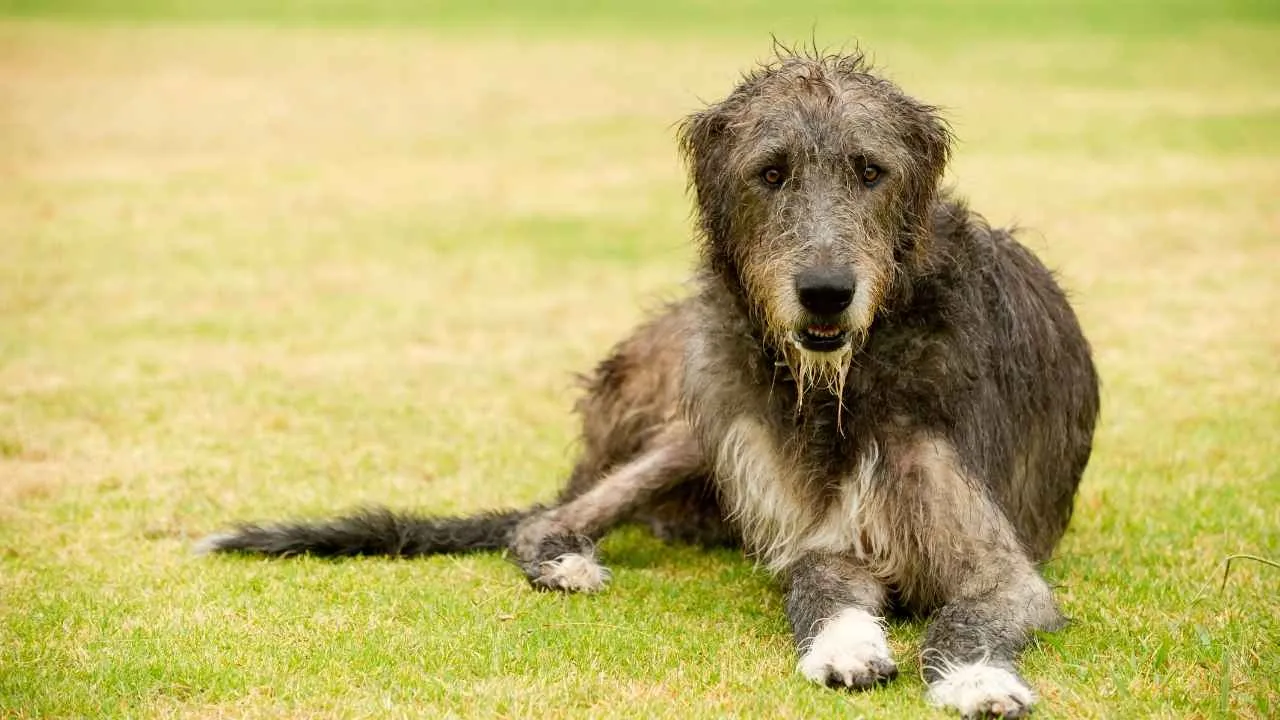
The Irish Wolfhound is one of the tallest dog breeds in the world, admired for its gentle strength and calm independence. Originally bred to hunt wolves and guard estates, it carries a noble, self-reliant spirit. Today, it balances bravery with quiet dignity.
Though affectionate and loyal, this breed values personal space and freedom. It’s not clingy but forms deep emotional bonds, often showing sensitivity to its owner’s mood. Their calm confidence makes them graceful companions rather than demanding pets.
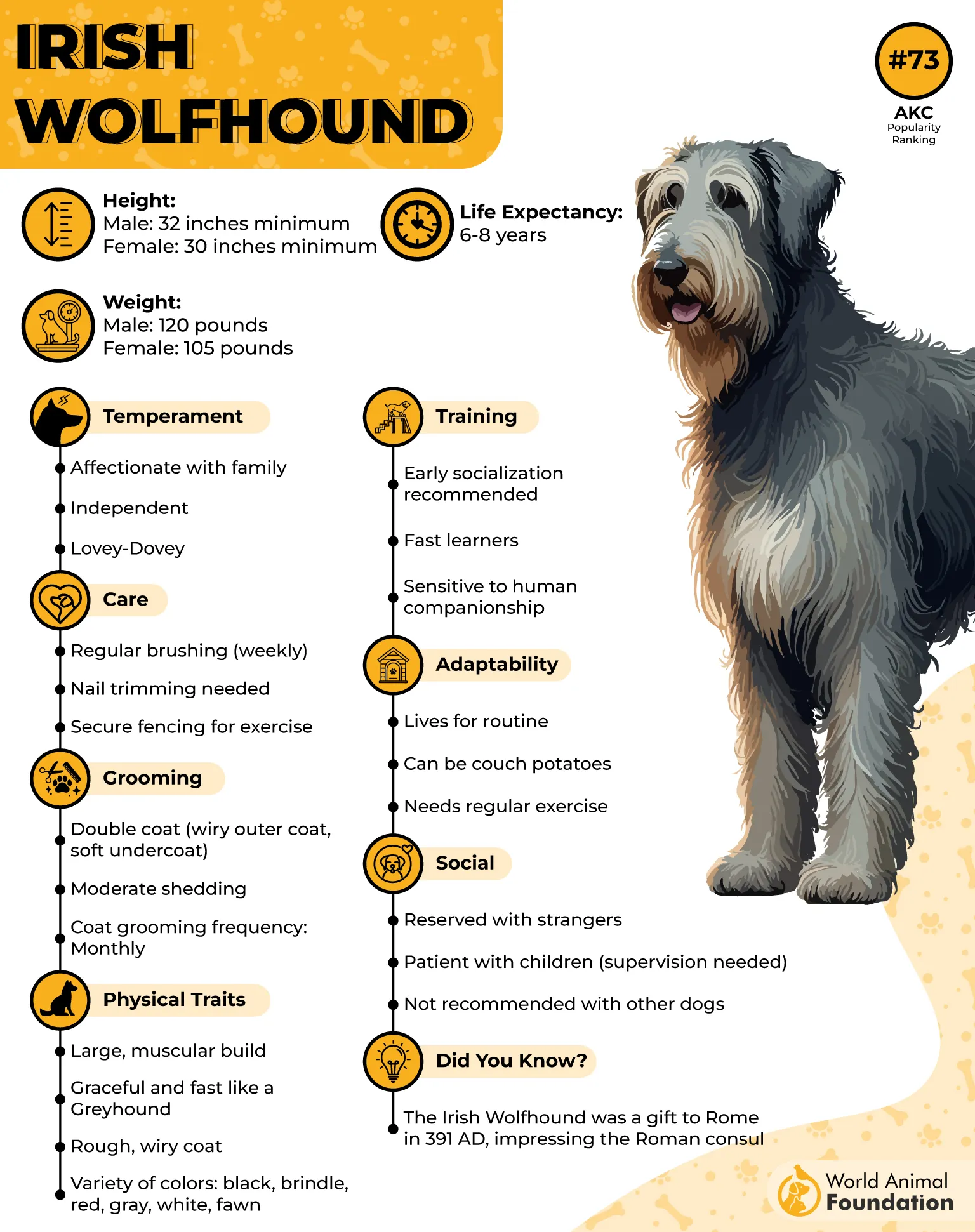
Despite their impressive size, Irish Wolfhounds have moderate exercise needs. Daily walks and open space for light running are ideal. They’re content to relax afterward, reflecting their balanced energy levels.
Their rough coat needs weekly brushing to stay clean and healthy. Combined with a gentle temperament and adaptable nature, they’re easy to manage with steady routines.
For those who admire large, noble dogs with independent minds and kind hearts, the Irish Wolfhound offers unmatched companionship. They’re quiet, devoted, and carry centuries of history in every stride.
Quick Tips
Provide moderate daily walks with room to roam
Brush weekly to manage their rough coat
Offer gentle leadership, they respond to kindness and a calm tone
6. Central Asian Shepherd Dog
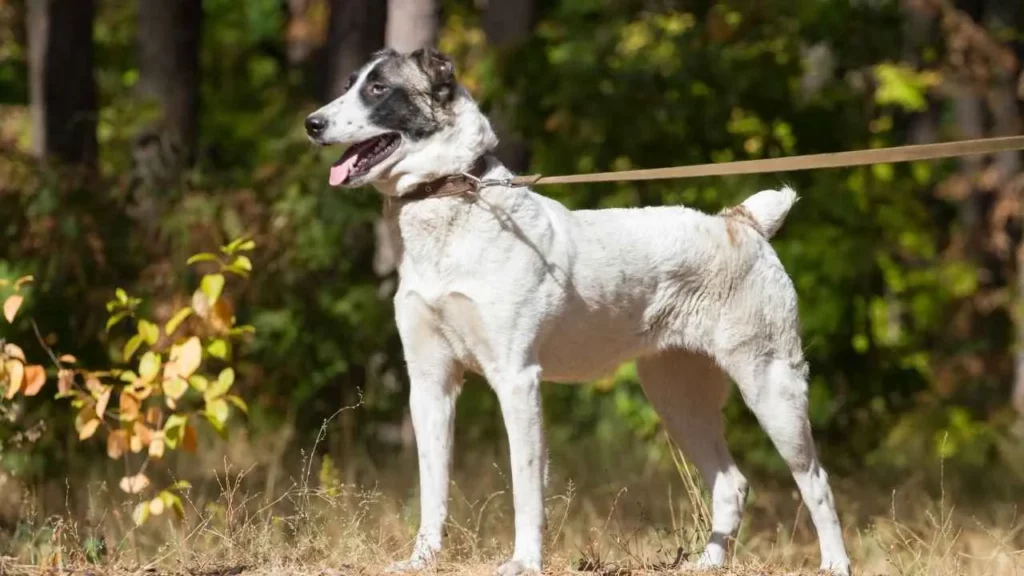
The Central Asian Shepherd Dog is an ancient livestock guardian, bred across vast steppes to work independently and protect herds. This heritage gave it exceptional judgment, courage, and self-sufficiency, qualities that define the breed to this day.
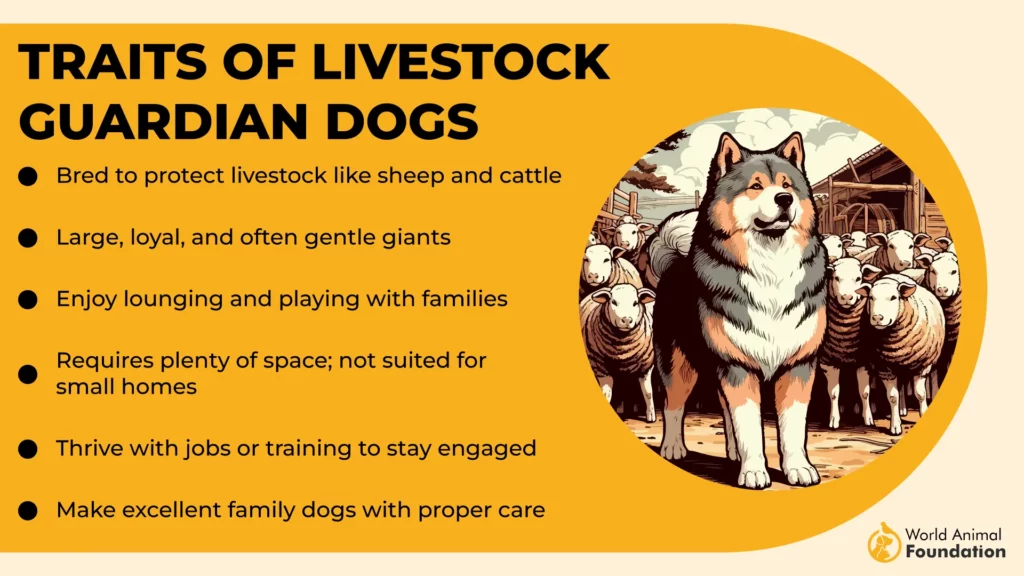
These dogs are calm, confident, and protective without unnecessary aggression. They assess situations carefully before reacting, relying on natural instincts honed through centuries of guarding duties. Their independence shines in environments where they’re trusted to make decisions.
Physically strong and weather-resistant, they thrive outdoors and adapt to challenging climates. Their dense coat needs regular brushing to remove loose fur, especially during seasonal shedding. Routine care keeps them comfortable and resilient.
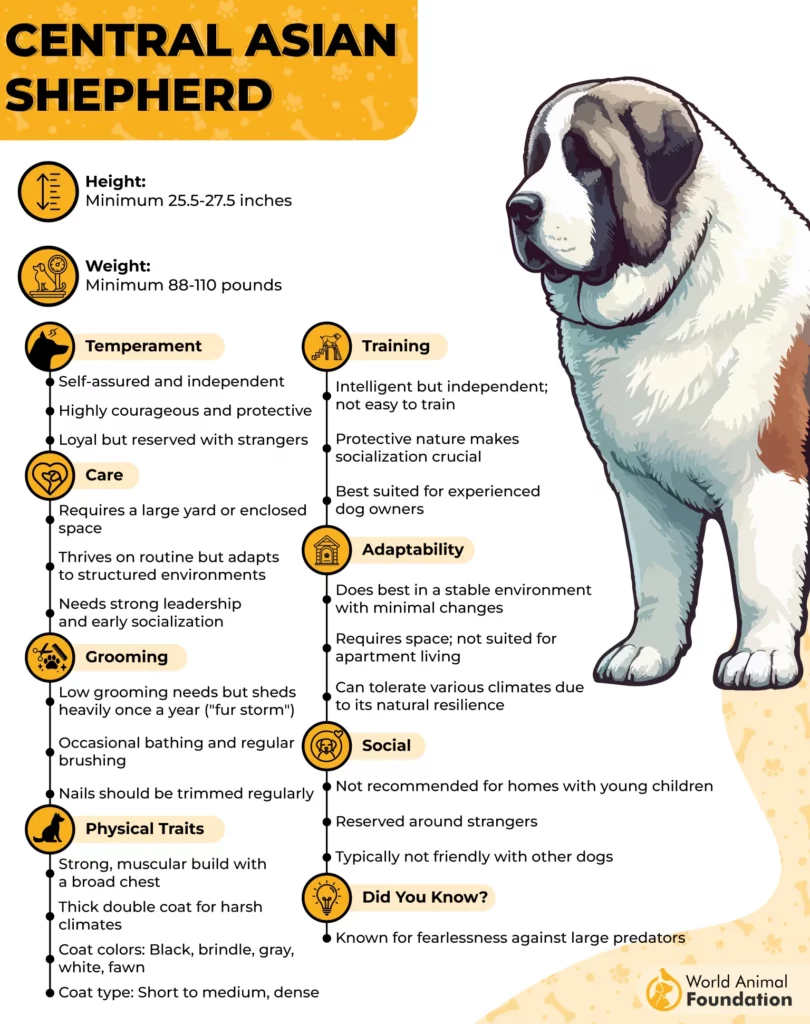
As per PetMD, training a Central Asian Shepherd requires experience and respect. They value consistency and fairness over repetition or strictness. Early socialization builds trust and ensures their confidence stays balanced.
For owners seeking a majestic, independent protector, this breed delivers loyalty and self-assurance in equal measure. It’s a true symbol of working-dog heritage.
Quick Tips
Start early socialization for calm, confident behavior
Brush weekly, more during shedding seasons
Provide space and structure, and they thrive with clear boundaries
7. Korean Jindo
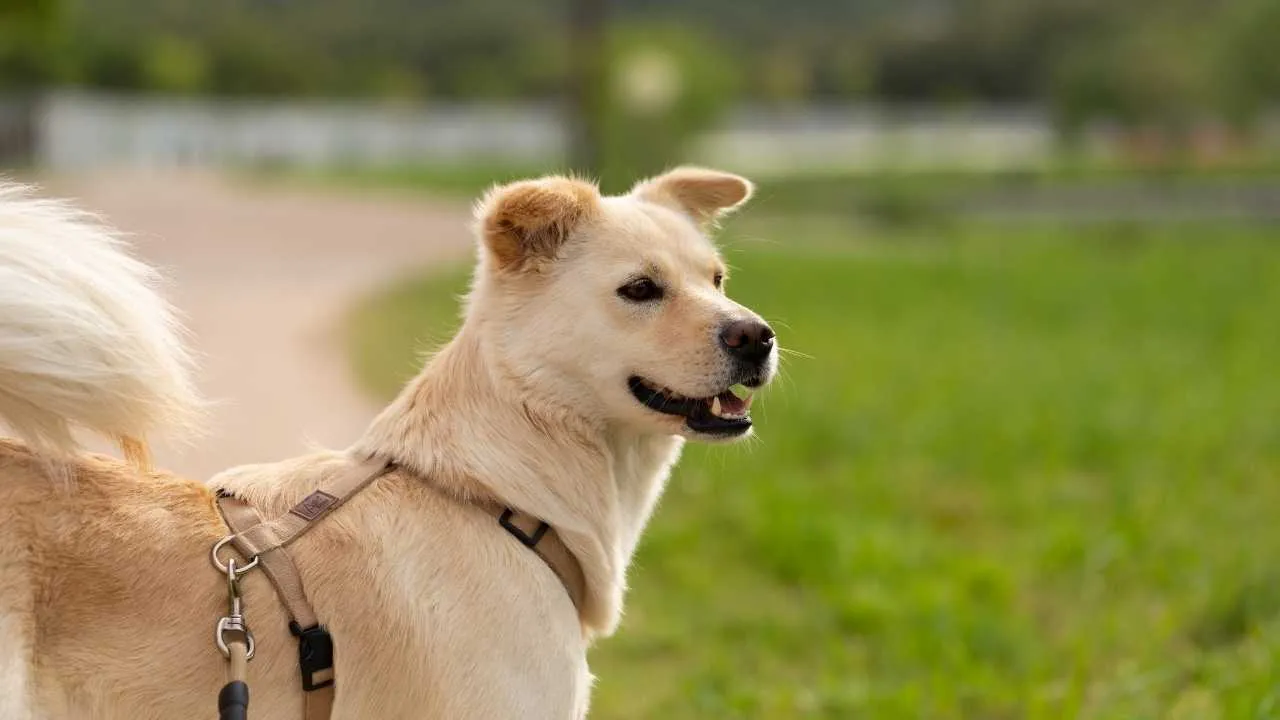
The Korean Jindo is a national treasure in South Korea, known for its loyalty, bravery, and remarkable independence. Bred for hunting and guarding, it has developed sharp instincts and strong decision-making skills. These traits make the Jindo a self-assured companion with an unwavering sense of duty.
Highly intelligent and perceptive, Jindos are quick learners who often think for themselves. They form deep attachments to their families yet remain reserved around strangers. Their balanced temperament, alert but calm, reflects their confident, independent nature.
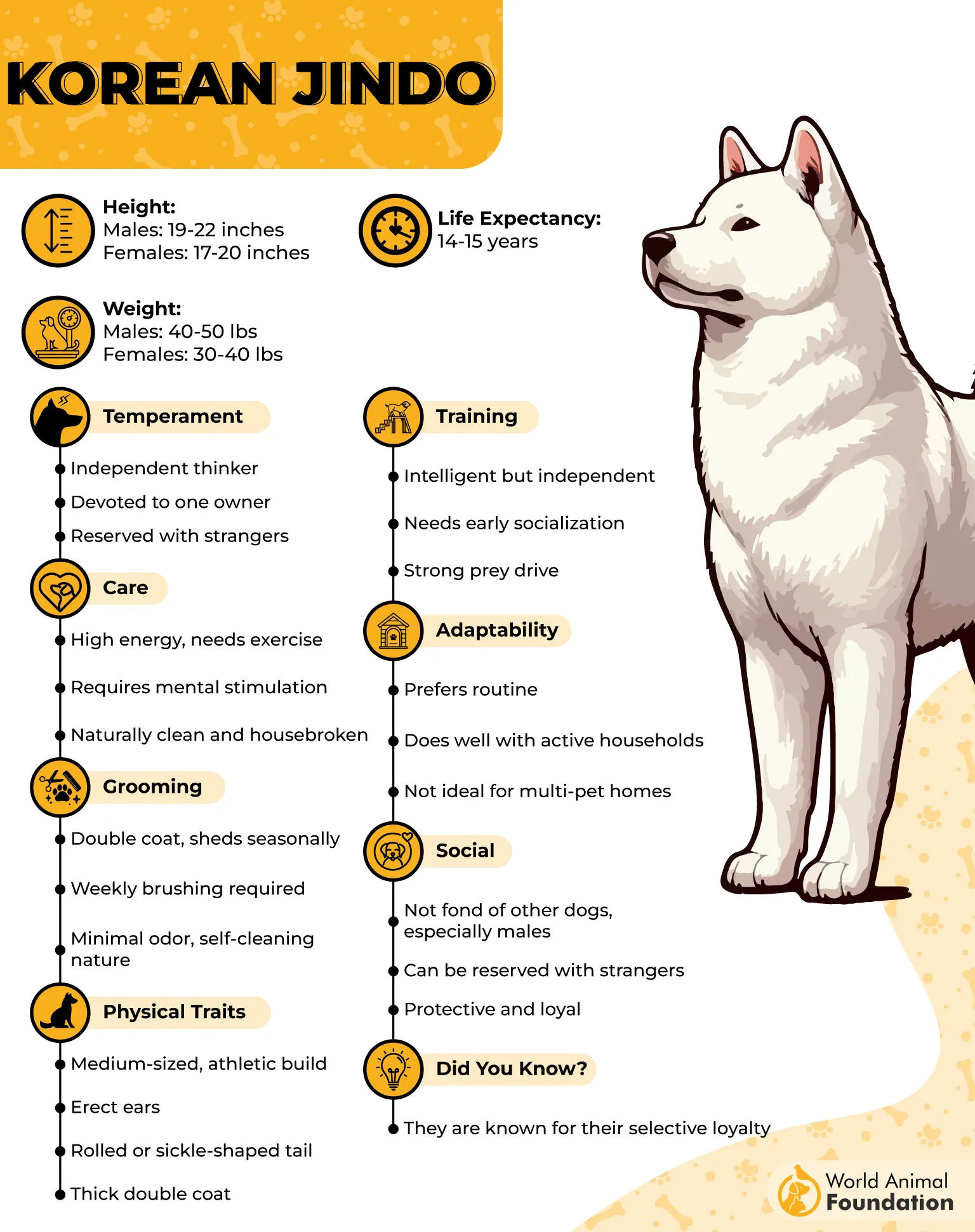
Physically, Jindos are medium-sized, athletic dogs with a double coat that resists dirt. Weekly brushing keeps their coat clean and comfortable, and their natural cleanliness reduces grooming needs.
Training a Jindo requires patience and consistency, as they prefer cooperation over commands. They respond best to firm yet gentle guidance, respecting leaders who treat them with fairness.
For experienced owners seeking a loyal, self-reliant dog, the Korean Jindo offers a perfect blend of intelligence, courage, and composure.
Quick Tips
Use firm, consistent training with positive reinforcement
Brush weekly to maintain coat health
Provide daily exercise to satisfy their active instincts
8. Akita
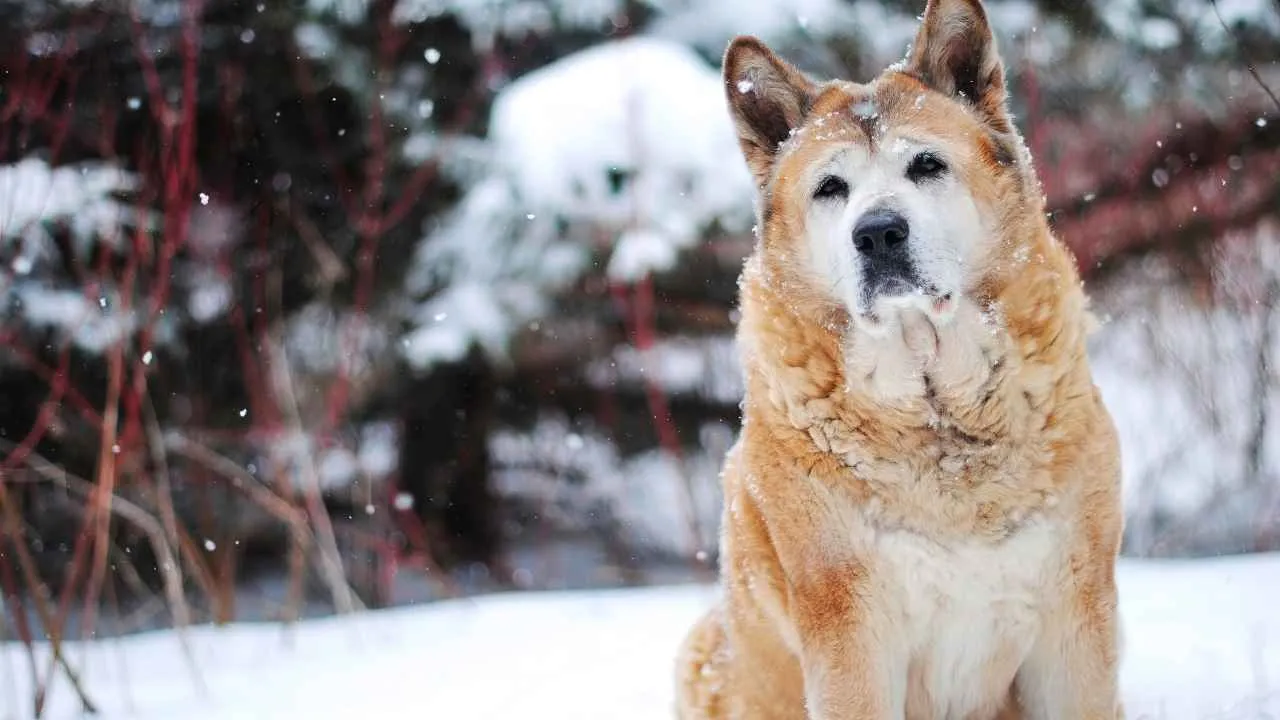
The Akita is a bold, dignified breed with a powerful presence and a deeply loyal heart. Originating in Japan, it was bred to guard royalty and hunt large game, leading to its strong independence and fearless temperament.
Akitas are affectionate with family but often aloof with strangers, reflecting their natural protectiveness. They think carefully before acting, showing both confidence and restraint. This composed demeanor makes them reliable guardians and devoted companions.
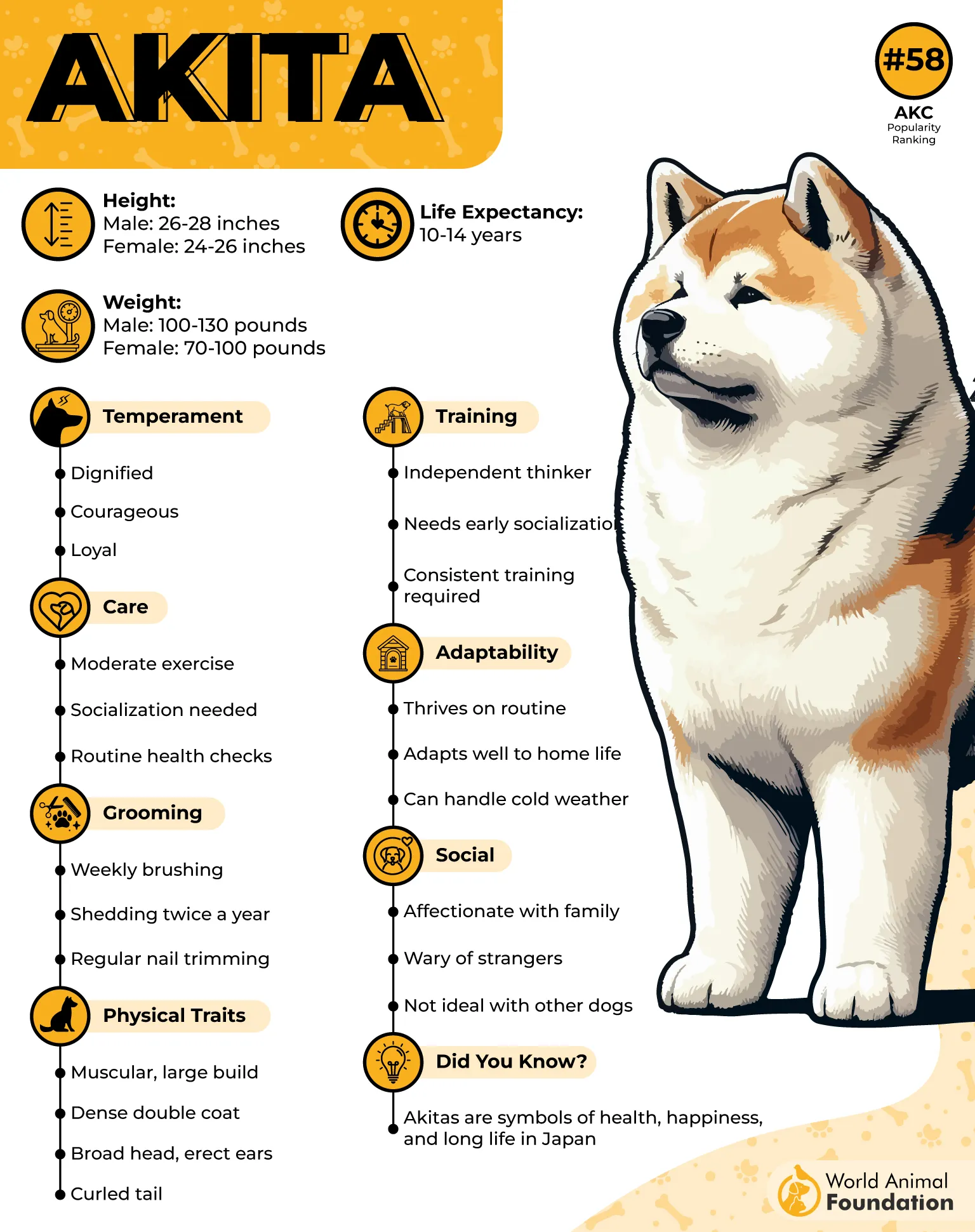
Their thick double coat, designed for cold climates, benefits from regular brushing to control shedding. Despite their majestic look, they’re relatively low-maintenance beyond seasonal grooming.
Training requires patience and respect. Akitas respond best to calm, consistent leadership. Their intelligence allows them to learn quickly, but they prefer understanding “why” over blind obedience.
Independent yet deeply loyal, the Akita is ideal for experienced owners seeking a courageous, thoughtful partner who values trust above all.
Quick Tips
Brush several times weekly during heavy shedding
Begin obedience training early to build trust
Keep socialization ongoing for balanced confidence
9. Great Pyrenees
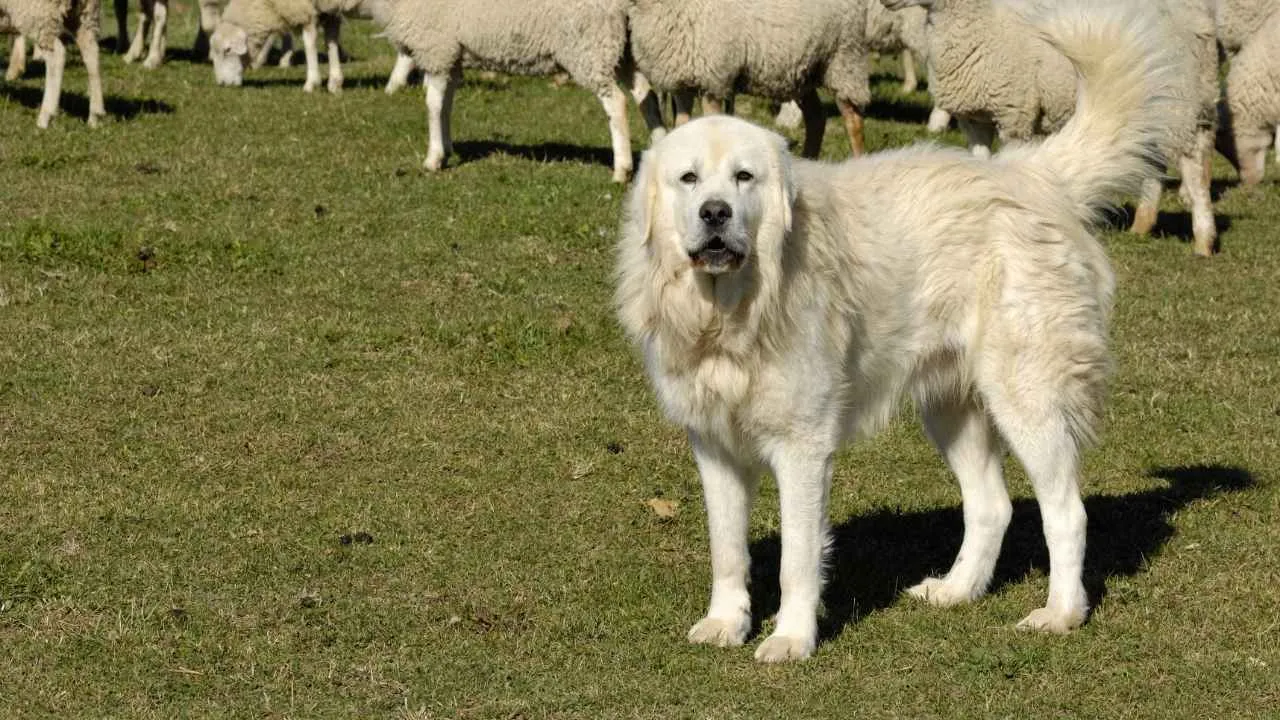
The Great Pyrenees is a majestic guardian breed known for its calm strength and independent mindset. Bred to protect livestock in mountainous regions, it learned to make decisions without human direction. This deep-rooted autonomy remains central to its character.
Highly intelligent and observant, the Great Pyrenees watches over home and family with quiet vigilance. It rarely acts rashly, preferring to assess situations before intervening. Their independence is matched by a gentle nature, especially around children and smaller animals.
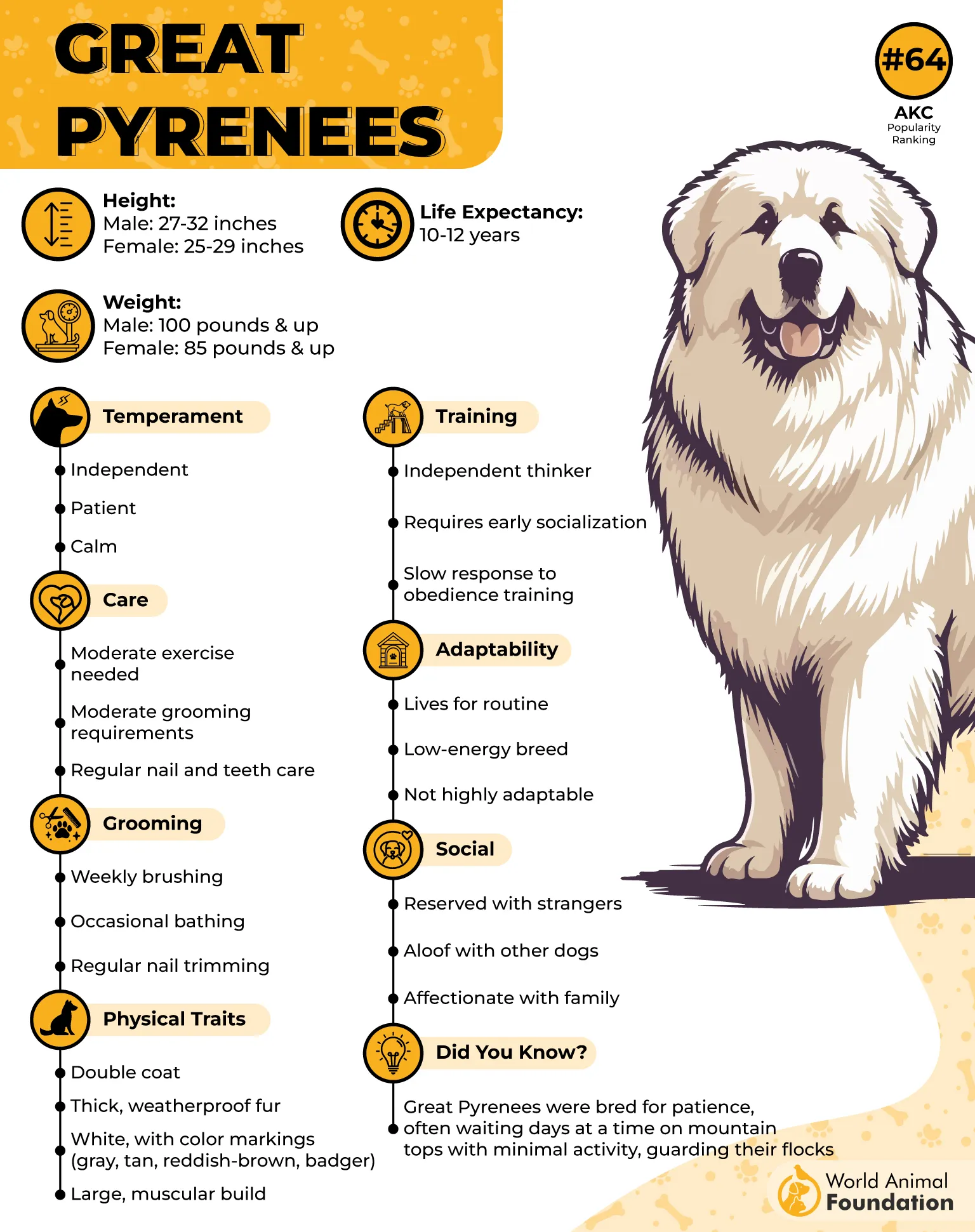
Their thick, weather-resistant coat requires regular brushing to manage shedding and maintain comfort. Adapted for cold climates, they thrive in cooler environments with space to roam.
Because of their strong will, training must emphasize patience and mutual respect. They respond best to positive reinforcement and consistent boundaries.
For owners seeking a large, thoughtful dog with steadfast instincts, the Great Pyrenees embodies strength, serenity, and self-reliance.
Quick Tips
Brush weekly to prevent matting and control shedding
Offer clear rules; they respond well to structure
Provide cool resting spots in warm weather
10. Tibetan Mastiff
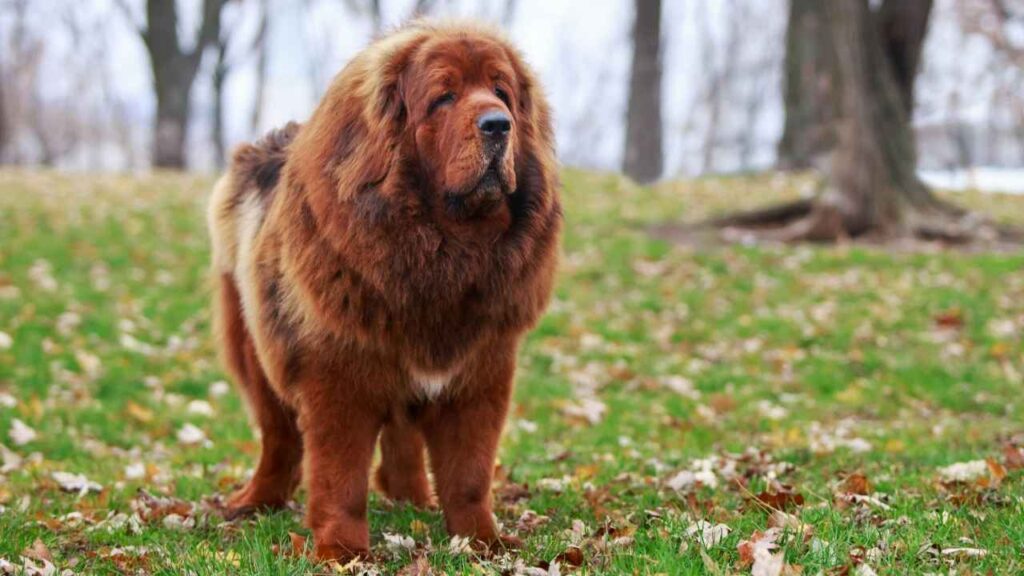
The Tibetan Mastiff is an ancient guardian breed, renowned for its strength, intelligence, and remarkable independence. Originating in the Himalayas, it was bred to protect livestock from predators, often working alone without direct supervision.
This breed is calm, confident, and observant—never quick to act but decisive when necessary. Its independence is balanced by deep loyalty, forming strong bonds with family members while maintaining a reserved nature around strangers.
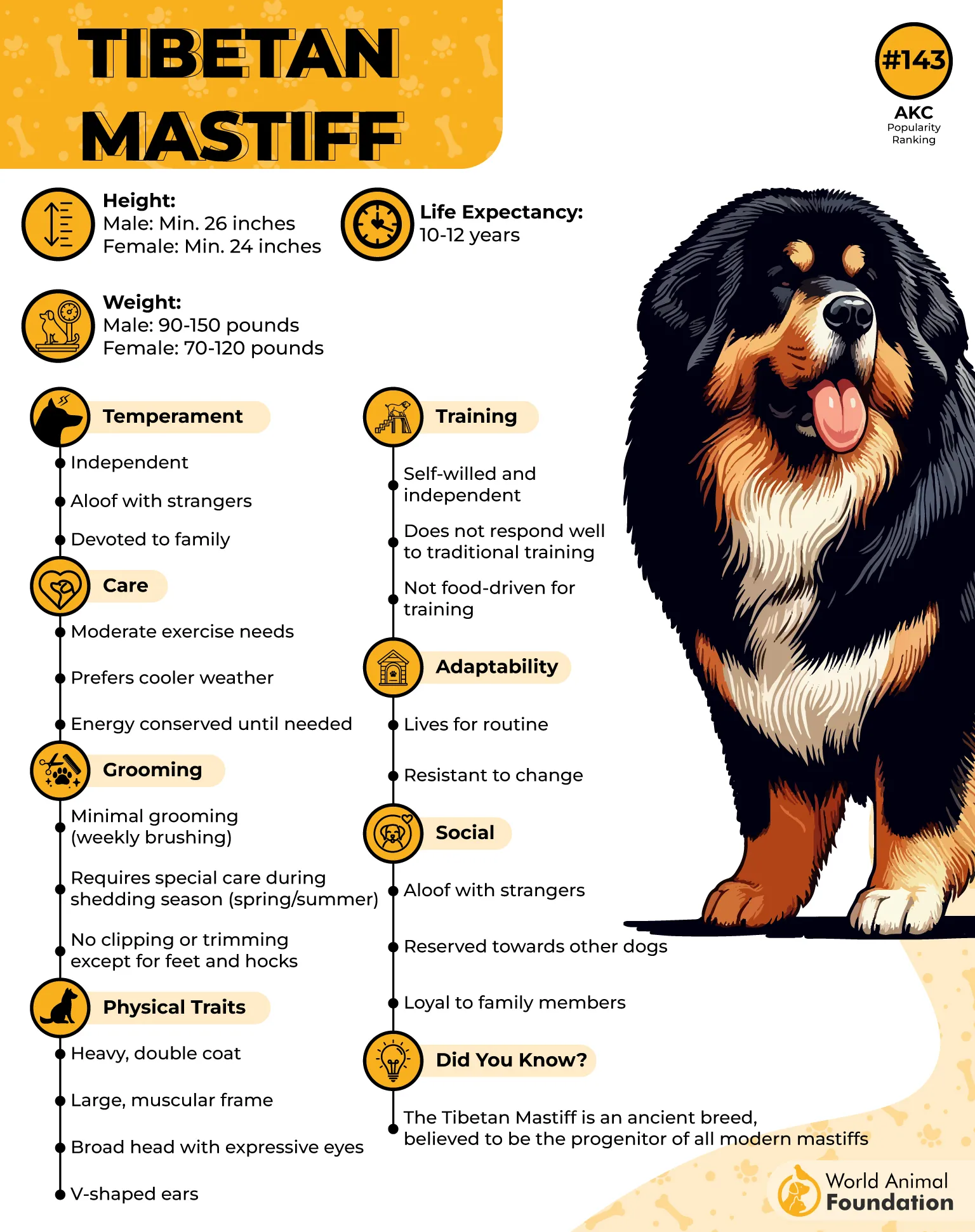
Tibetan Mastiffs have a thick, double coat that requires regular brushing, especially during seasonal shedding. Their fur insulates against cold weather, reflecting their mountain heritage.
Hill’s Pet states that training must be firm, patient, and respectful. They value fairness and respond best to owners who lead with consistency and understanding. Their strong will means they benefit from early socialization and clear boundaries.
For owners seeking a majestic, self-reliant protector, the Tibetan Mastiff offers unmatched confidence and calm guardianship.
Quick Tips
Brush frequently, especially during shedding seasons
Train early with patience and steady guidance
Provide ample space and mental stimulation
Conclusion
Independent dog breeds appeal to pet owners who appreciate confidence, intelligence, and a distinct personality. Many were once hunting dogs or guard dogs, shaped by rich history and an independent streak that thrives on freedom and their own space.
Though they may not seek constant companionship, they form deep bonds and show unwavering loyalty when properly trained from an early age. Their affectionate nature, laid back attitude, and ability to lead with thought rather than impulse make them ideal for those who value human companionship with balance.
For dog lovers, first-time dog owners, or apartment dwellers seeking self-assured pets, breeds like these prove that independence and love coexist. Other dog breeds, such as Chow Chows, Afghan Hounds, Shiba Inu, Border Collies, Russian Wolfhound, Sleek Sighthounds, and Alaskan Malamutes, often described by their curled tails, wrinkled faces, or lion-like manes, are excellent guard dogs with spirited personalities and unwavering devotion.


